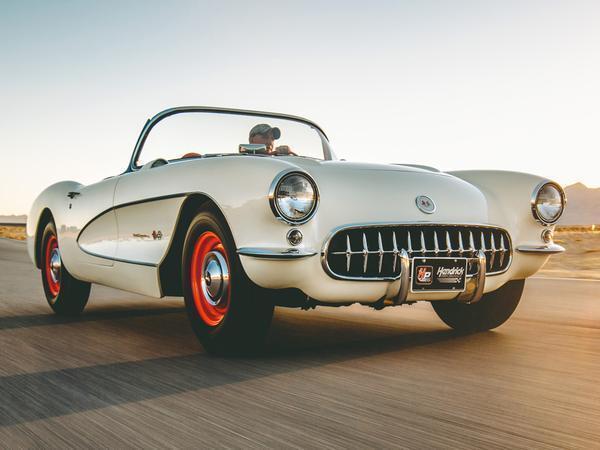PH Origins: Electronic fuel injection
The 'EFI' badge was most coveted in the '80s - but real early adopters had rolled the dice on EFI way back in 1958...

The hard-won innovations of the war were now being employed for more civil uses, too, with military technology trickling down into the consumer market. For example, Stuart Hilborn - an engineer who served in the Army Air Corps - started experimenting with aviation-derived mechanical fuel injection for cars following the war. He subsequently established the renowned Hilborn Fuel Injection company in 1948; its easily recognised ram stacks became a prominent feature of many a build and, thanks to Hilborn's popularity in racing and ongoing development, the company is still in business today.
General Motors had clocked the air flow and fuel distribution benefits that Hilborn's system, among others, offered when compared to a carburettor. There was no question that, properly applied, it could give the company's C1 Corvette - which was being updated in 1956 - an extra selling point. Anything that would help take Ford's new Thunderbird down a few pegs, at any rate, was always useful.

GM wasn't the first to use a production mechanical set-up, being preceded by the direct-injection system used in the Mercedes-Benz 300SL, but home-grown rivals didn't like the General's new technical edge. Chrysler, for one, wasn't going to sit on its hands while GM stole all the thunder.

So, in 1953, Bendix had started developing a more affordable, precise and flexible electronic system that could easily be applied to myriad applications. After several years of development, it had a functioning system - dubbed 'Electrojector'. No prizes for guessing which two words were used to come up with that particular portmanteau.
In the Electrojector set-up, each cylinder benefitted from its own electronically triggered injector. These were typically fired by extending the remit of the engine's distributor to include a separate injector-triggering commutator; signals sent through this were tailored by a control module which, after assessing various inputs, would deliver a pulse that would open the injector for the correct period of time.
AMC, which was prepping its radical Rambler Rebel for launch in February 1957, took up Bendix's Electrojector system; it was claimed to boost the Ramber's 5.4-litre V8 by 33hp and added a little torque. Teething troubles were numerous, however, and supply problems consequently meant that no EFI-equipped Ramblers were offered to the public.

Unfortunately, and somewhat predictably, the optional $637 Electrojector - over £5,000 in today's money - still proved ruinously unreliable. Problems were so rife that Chrysler simply let customers bring Electrojector-equipped cars to dealerships, where the troublesome EFI would be torn out and replaced with dual-quad carburettors. Consequently, only 35 Electrojector cars made it into the wild and most were later retrofitted. The problems, it transpired, were simply down to a lack of suitable components. The capacitors used in the control unit couldn't tolerate under-bonnet conditions and constant adjustment and maintenance was required for proper operation.
Even today, however, an Electrojector system wouldn't be unfamiliar to those used to electronic fuel injection. It had an electric fuel pump, a fuel rail, temperature and pressure sensors, individual injectors, twin throttle bodies and a throttle position sensor. All of this was regulated by the 'brain box' - as it was dubbed by Bendix in its technical documentation - that interpreted sensor inputs and generated the required pulses, dispatched via the triggering selector in the distributor, for the injectors; the system could even accommodate for cold starts and changes in altitude and pressure.

Chrysler, now aware it'd jumped the gun, bailed out. Bendix persisted, though, stating 'this is a new concept in fuel metering and poses new and different problems', and ended up licensing its patents to Bosch in 1965. With a little further development, Bosch promptly delivered its first 'D-Jetronic' EFI set-up in the 1967 Volkswagen 1600.
Improving hardware and tumbling costs resulted in a wider rollout of the technology and, as emissions controls tightened during the 1970s, EFI soon rose to dominance. This was thanks to its improved drivability and efficiency and, importantly, its precise mixture control; this allowed mixture-sensitive catalytic converters to function effectively and last.
By 1990, as the required electronics continued to develop and costs dropped even further, EFI finally found its feet - and became practically standard across the board.
Gassing Station | General Gassing | Top of Page | What's New | My Stuff



